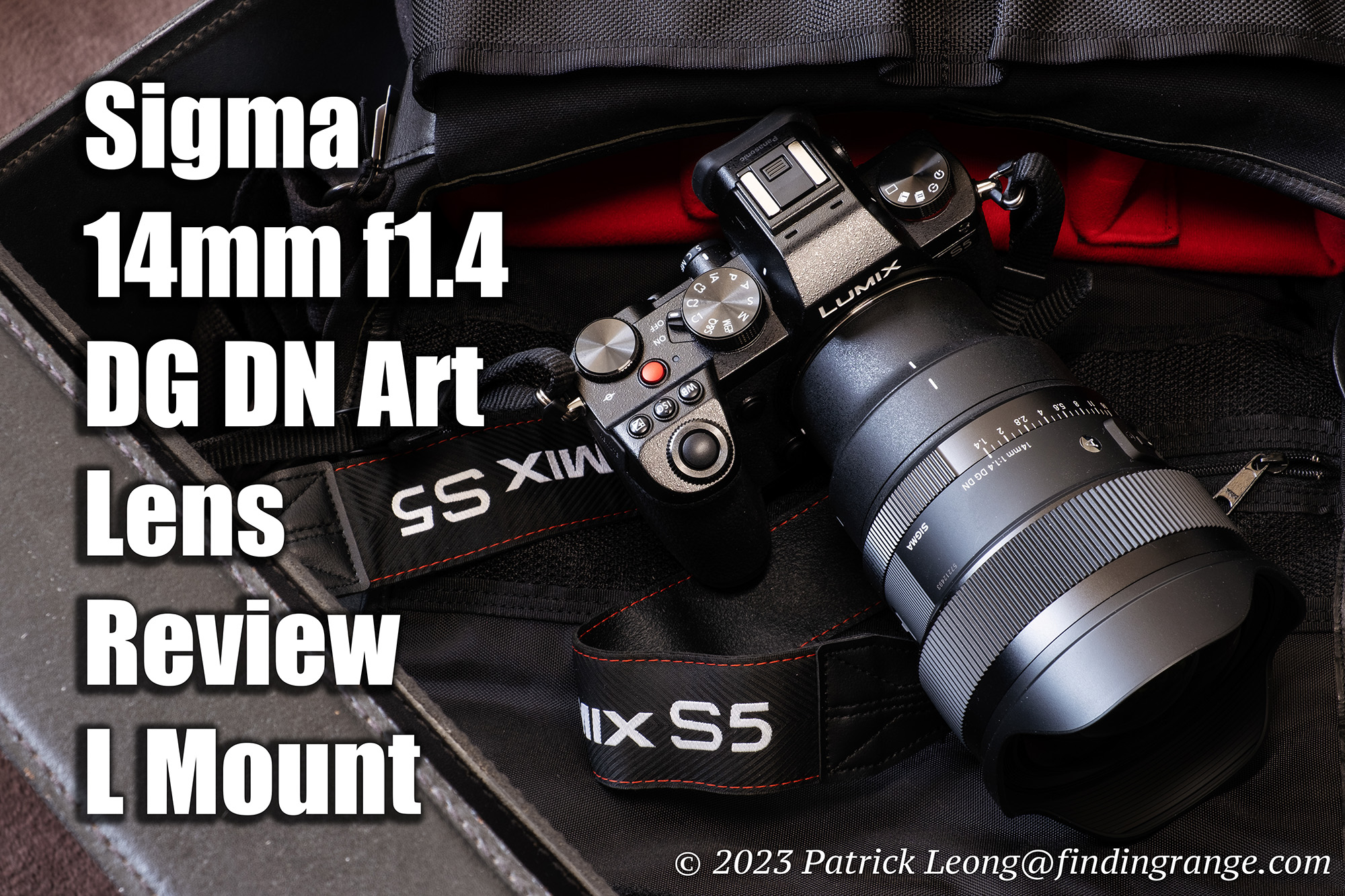Sigma 14mm f1.4 DG DN Art Lens Review L Mount:
For those looking to photograph landscape, and images with beautiful starry nights, an ultra wide angle lens with a large maximum aperture, such as, the Sigma 14mm f1.4 DG DN Art, can be a huge help. As of June 2023, this newly announced lens is the world’s widest f1.4 single focal length lens that is non-fisheye, and it’s been designed exclusively for mirrorless camera systems like Leica L mount, and Sony E mount. Thanks to Sigma, I was able to get an early production sample in L mount before the official release date to test. Here are my thoughts.
Thanks for taking the time to read my review! If it helped, please consider purchasing from any of the links mentioned in this post, which in turn, helps support this site. I get a small commission but it will not cost you anything extra. Thank you!
Sigma 14mm f1.4 DG DN Art Lens Build Quality:
Let’s first start off discussing the overall build of the 14mm f1.4 DG DN Art. The lens is in the Art line, which is basically Sigma’s flagship series. This means there’s more attention paid to features like build, and after using the 14mm f1.4, I can tell you that this wide angle does not disappoint in this area. The 14mm f1.4 Art is made of polycarbonate TSC (Thermally Stable Composite), and feels absolutely solid in every way. There are no creaks, rattles or any signs of inferior quality whatsoever. I has a nice, dense feeling to it. There’s a focus ring that is smooth along with an aperture ring, which is nice to see in an autofocus lens designed for L mount. The 14mm f1.4 Art is also dust, and splash resistant with the front most surface of the lens coated with a water, and stain repellent coating, so this is definitely an optic that can be taken with you even when the weather isn’t ideal.

↑ Here’s the new Sigma 14mm f1.4 DG DN Art lens attached to the Panasonic Lumix S5.
In addition, I can really tell the designers put a lot of thought into designing this lens based on its features, and functions. They know that this is a lens that photographers will be using for landscape, and starscape photography, so the 14mm f1.4 DG DN Art has a number of useful attributes worth mentioning. For one, since this lens is front heavier because it is an ultra wide with an f1.4 maximum aperture, there is a detachable tripod mount compatible with Arca-Swiss type. There’s also an MFL (Manual Focus Lock) Switch to lock the manual focus at a desired position, which is useful for long exposure photos. Furthermore, there is also a lens heater retainer along with a rear filter holder. Lastly, the lens cap is more than just your average cover for your front element. There’s a locking mechanism, and what’s really cool is the lens cap can hold two rear sheet filters in it. All of these features combined with the solid build quality ensure a lens that’s sole purpose really seems to be for taking amazing landscape, and starscape photographs.
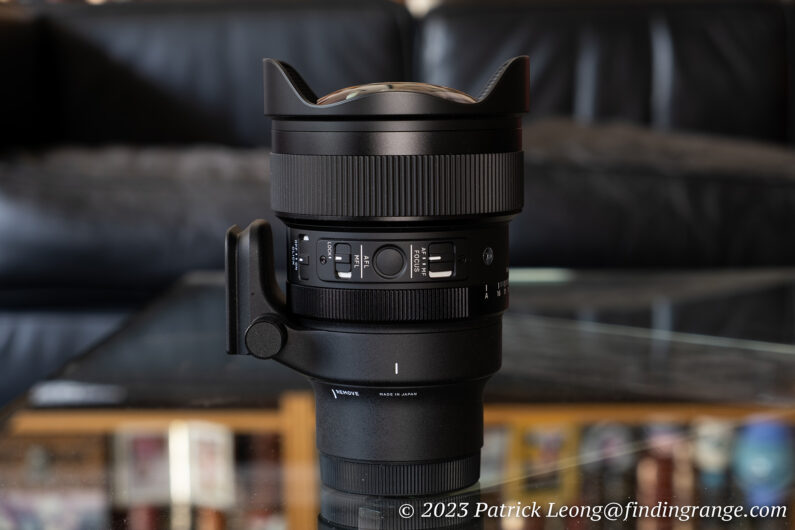
↑ Here’s a side view of the lens.

↑ Here’s another side of it.
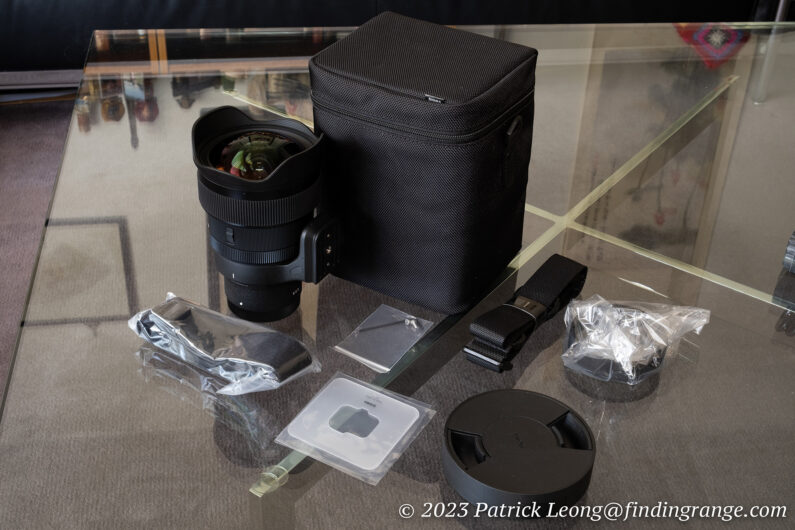
↑ This is what is included with the 14mm f1.4 DG DN Art.

↑ The 1 and 2 on the lens cap are actually filter holders.
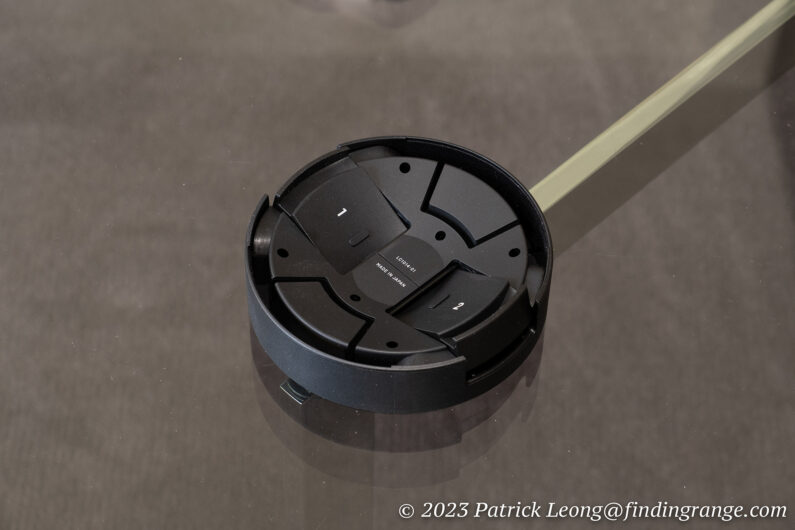
↑ You simply open the slots like this to fit the filters safely in the lens cap.
As for the overall ergonomics, the 14mm f1.4 DG DN Art is on the larger and heavier side. The dimensions are 101.4 x 149.9mm/4.0 x 5.9 in with the weight being 1170g/41.3 oz. There is a big bulbous front element as you can see in the photos that one might accidentally touch from time to time. I know I did it :). The lens does make the camera a bit front heavy.
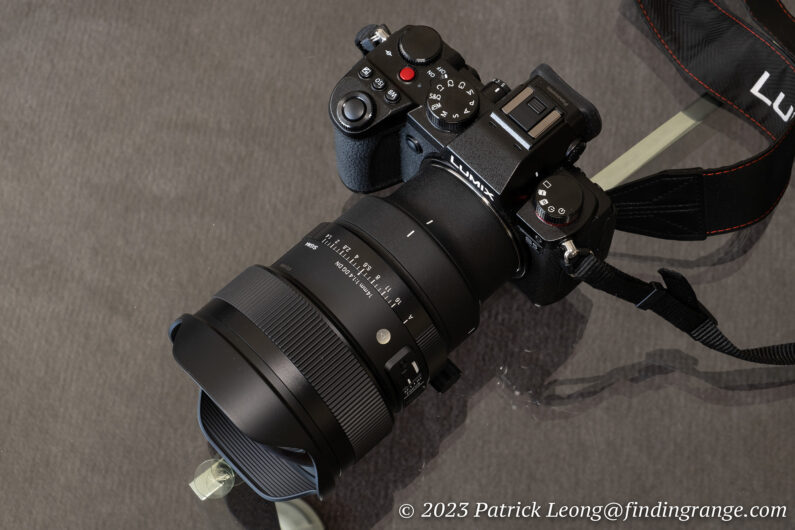
↑ Here’s a top view of the lens.
But I’m sure many who are interested in a lens like this already know this all comes with the territory of having a 14mm focal length with a large f1.4 maximum aperture. It’s just physics, and therefore, shouldn’t be a surprise given that it is, as I mentioned earlier, also the world’s widest F1.4 single focal length lens that is not a fisheye (as of June 2023). In addition, the build is exceptional, the lens has tons of features, and it also has autofocus. I feel the designers did their best to keep it as compact, and lightweight as possible. Sure, it’s not as compact or as light as the 17mm f4 DG DN Contemporary but the 14mm is a different type of lens. Plus, I was still perfectly able to walk around New York City with 14mm f1.4 as you can see in my photos below. In fact, except for one night, I didn’t use the lens on a tripod.
Sigma 14mm f1.4 DG DN Art Lens Autofocus:
As for the autofocus, the HLA (High-response Linear Actuator) helps the 14mm f1.4 DG DN Art to achieve fast, and essentially silent focusing. I wasn’t really expecting autofocus issues especially with a wide angle lens, and I’m happy to say the 14mm f1.4 didn’t cause me any whatsoever. I was given an early production sample, so I am technically running beta firmware but even with that said, the autofocus did what it was suppose to do, it was predictable, and it was efficient as well. I tried the autofocus in a variety of lighting conditions. I did take the lens out for some night shooting, for example, and it still performed quite well. It is also very accurate even at f1.4.
Sigma 14mm f1.4 DG DN Art Lens Image Quality:
As for image quality, the 14mm f1.4 DG DN Art performs incredibly well, especially when you consider it’s not easy to design a wide angle lens with such a large maximum aperture. I can honesty say that this is one of the best wide angles I’ve used so far.

↑ This was taken using f5.6 and 200 ISO.
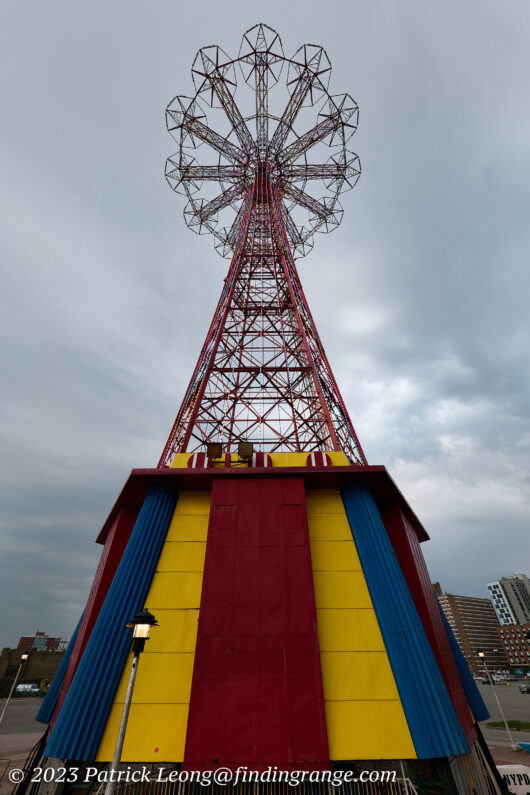
↑ Here’s a photo taken using f6.3 and 1600 ISO.
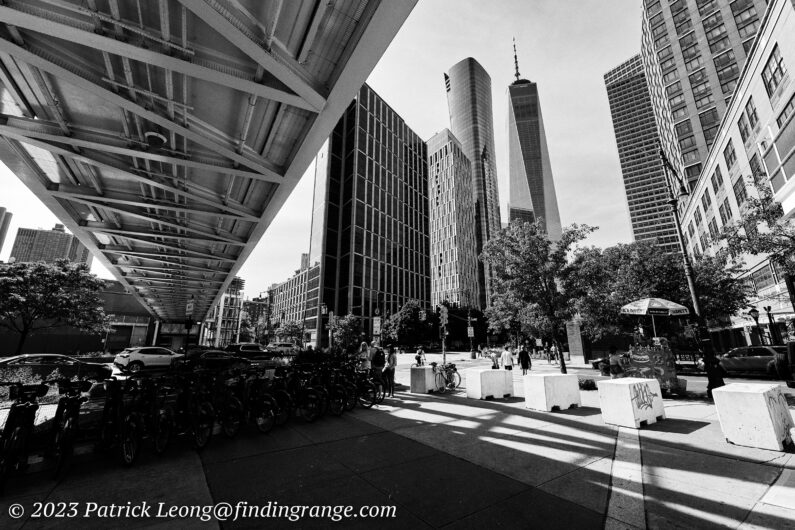
↑ This photo was taken using f8 and 200 ISO.
For one, the 14mm f1.4 is razor sharp. You can see every little detail in the photos. At f1.4, center sharpness is excellent with a slight loss in detail in the corners and edges, but in my opinion, they hold up quite well considering we’re talking about an ultra wide here. Stoping down helps sharpen up the entire image a bit with f8 and f11 being what I feel is the best. However, this is just me being nit picky because this is a review. You can clearly shoot this lens throughout the aperture range and get absolutely superb results. I don’t think anyone will have an issue shooting this lens at wider apertures, for example. Even though new cameras have great high ISO capabilities, I am still a little old school. I prefer to shoot in the lowest ISO possible whenever I can. I remember using this lens in the early evening. Since this was a 14mm, I could shoot at larger apertures, and still get a wide depth of field, so I was happily shooting at f4 and still getting fantastic results.
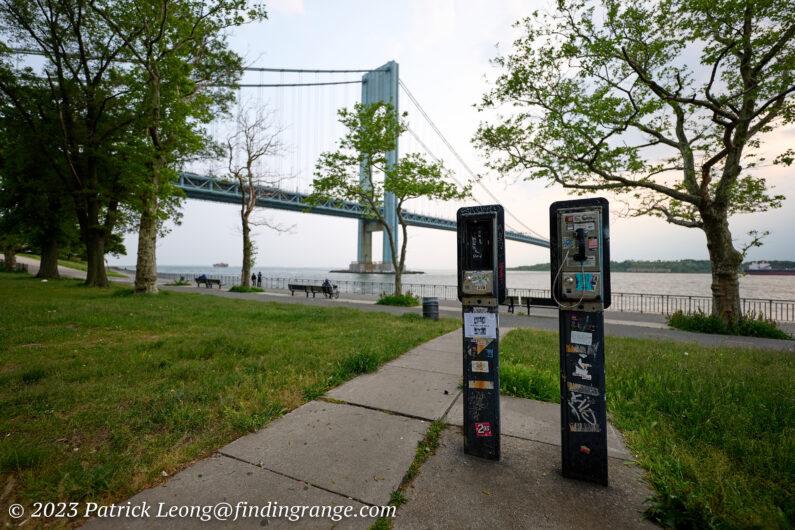
↑ I haven’t seen phone booths in so long. This was taken using f1.4 and 100 ISO.
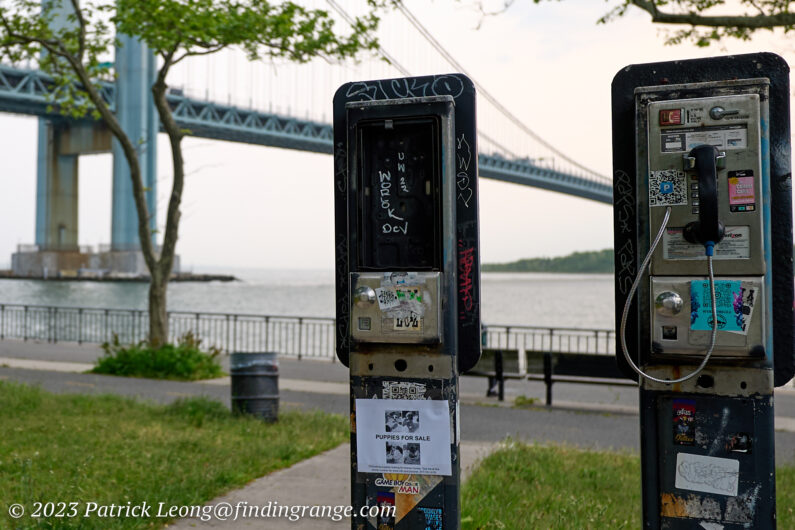
↑ Here’s a 100% crop of the photo above.
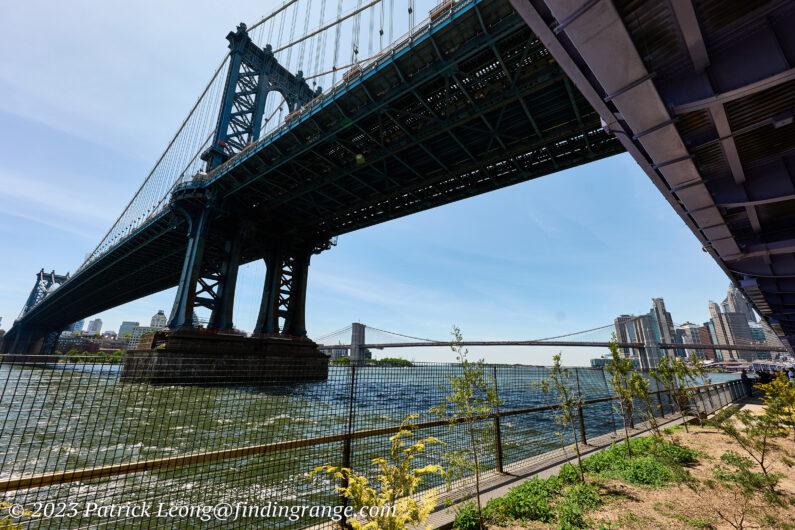
↑ Here’s a photo taken using f11 and 200 ISO.

↑ Here’s a 100% crop of the photo above.
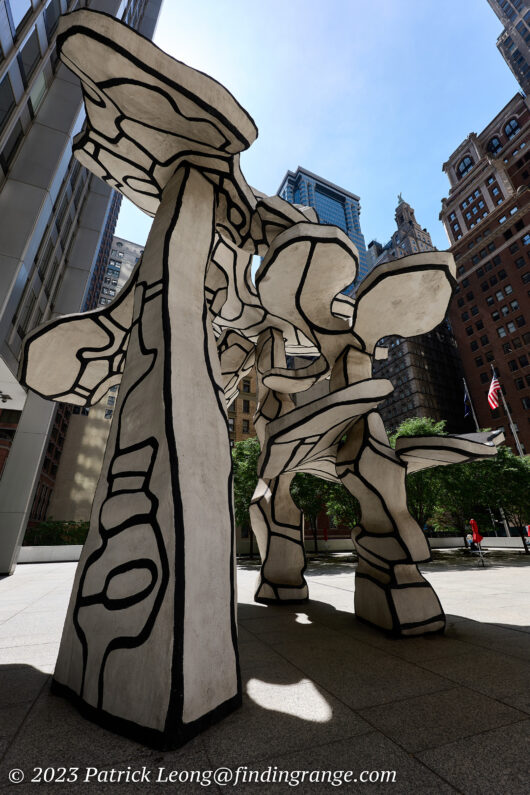
↑ This was taken using 8 and 125 ISO.
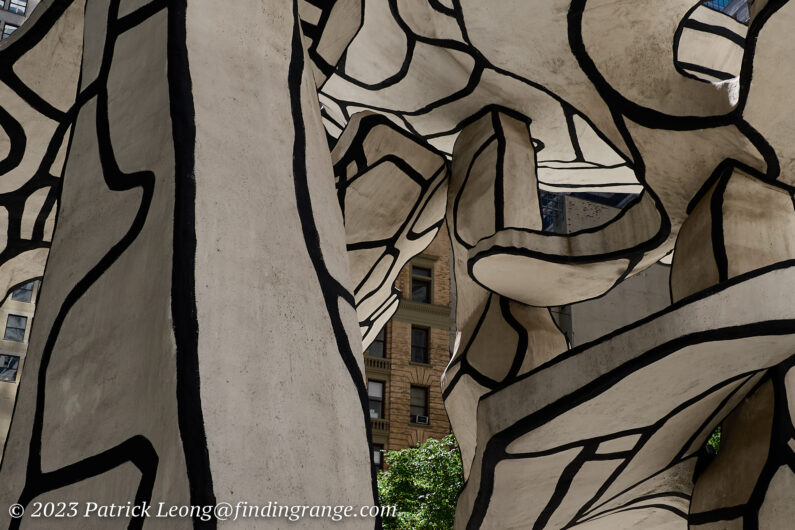
↑ Here’s a 100% crop of the photo above.
Besides sharpness, other features include nice depth, and pop in the photos. The color rendering is great, and the same goes with the contrast. Ghosting and flare, at least from what I have experienced with this lens, are very well-controlled, which helps, especially when one of the main goals of this lens is to shoot starry skies and night scenes. It’s also said that sagittal
coma flare, which distorts the shape of stars, has been carefully corrected with the 14mm f1.4 DG DN Art. There is some vignetting at f1.4, which isn’t out of the ordinary for an ultra wide with a large maximum aperture. Stopping down by just one stop significantly reduces vignetting. By f4, it is essentially gone. Overall, the optics are just stellar here. If you want something that really just knocks it out of the ballpark each time you’re out shooting, this lens should be on your list of “must haves”.
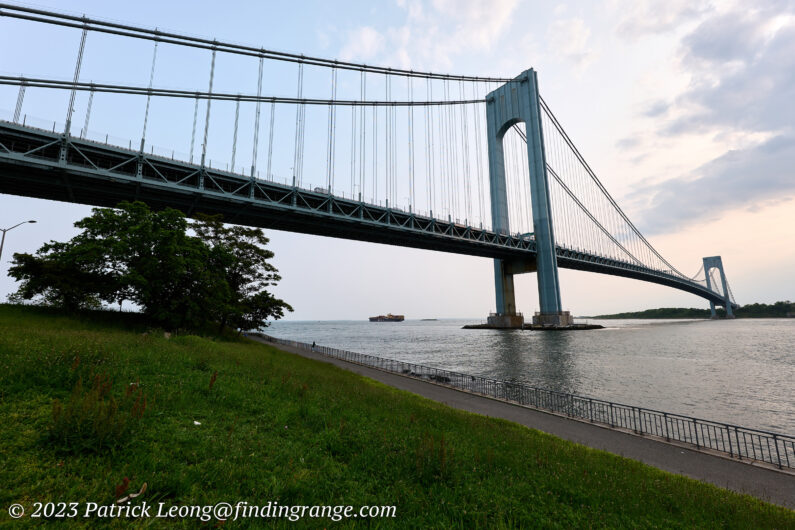
↑ This was taken using f8 and 250 ISO.
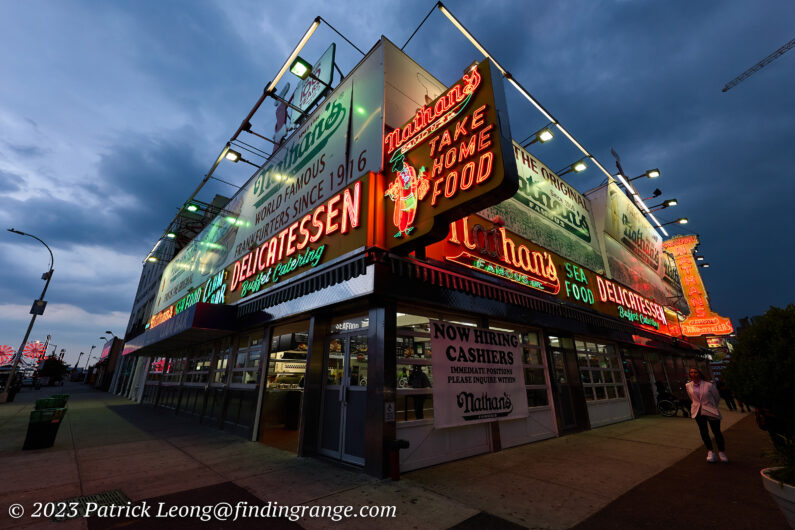
↑ A big storm came shortly after me taking this photo. I used f4 and 1000 ISO here.
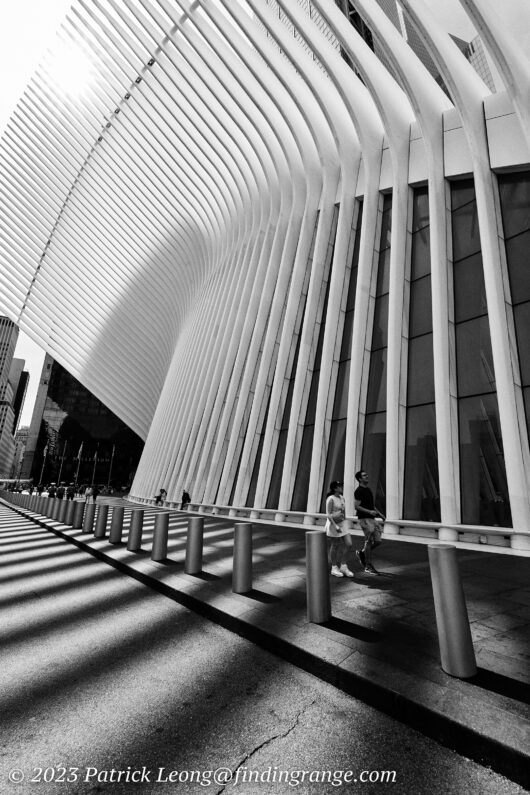
↑ This was taken using f8 and 200 ISO.
Sigma 14mm f1.4 DG DN Art Lens Bokeh:
As for bokeh and shallow depth of field, the 14mm f1.4 DG DN Art is not really designed to be used as a lens to isolate a subject with a shallow depth of field. You can definitely produce a thin depth of field but given its wide angle nature, you would have to get pretty close to your subject. I imagine most people who are interested in this lens are looking to use it for lowlight work maybe for weddings, and of course, what this lens was specifically designed for: astrophotography. With its ultra-wide 14mm focal length it’s able to capture wide starry skies, and thanks to the F1.4 aperture, exposure time is minimized, which can be of great benefit in astrophotography. With that said, I did include a couple of examples of the bokeh it can produce.
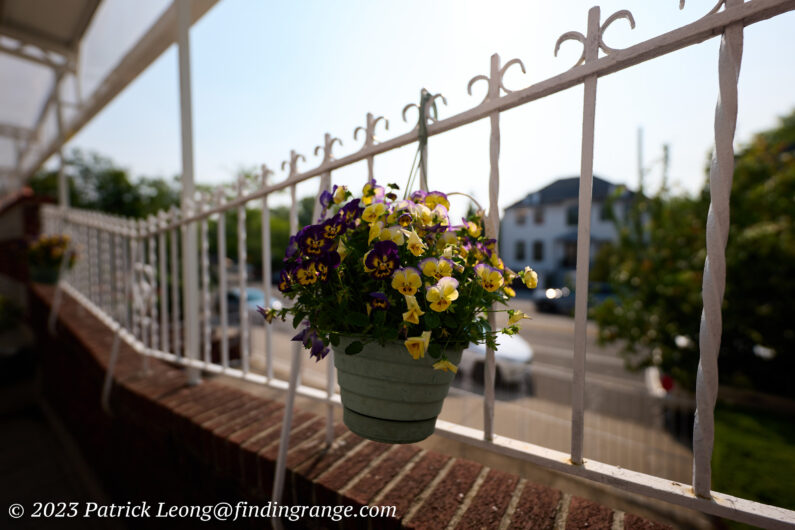
↑ I used f1.4 and 100 ISO here.
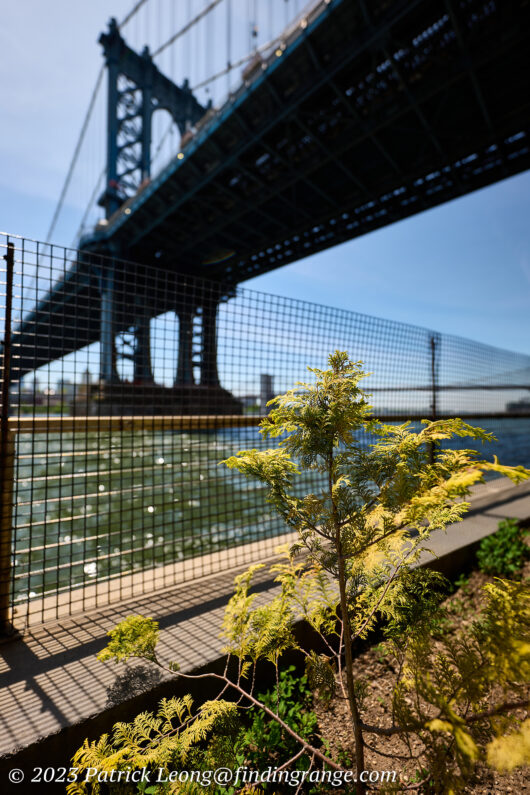
↑ This was taken using wide open aperture and 100 ISO.
Pros And Cons:
Pros:
- Build quality excellent.
- Dust and weather resistant.
- Great features beneficial to landscape and astrophotography.
- Great autofocus.
- Superb image quality.
- “Must buy” for anyone needing a lens with these kinds of specs and features.
Cons:
- Size and weight is kept to a minimum; with that said, it’s still a larger and heavier lens.
Sigma 14mm f1.4 DG DN Art Lens
The 14mm f1.4 DG DN Art is hands down one of the best ultra wides that I’ve used so far. It scores high in every important category, and in my opinion, it’s a “must buy” for anyone needing a lens of this caliber. If you’re looking for the best possible image that you can get, and you need an ultra wide angle lens to do it, it’s difficult for me to recommend anything better than this one. The lens performs flawlessly for a wide angle.
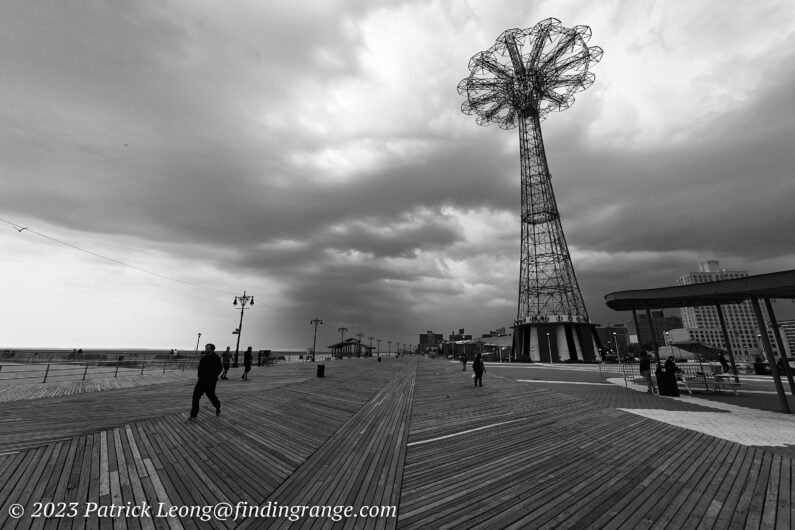
↑ This was taken using f6.3 and 1250 ISO.
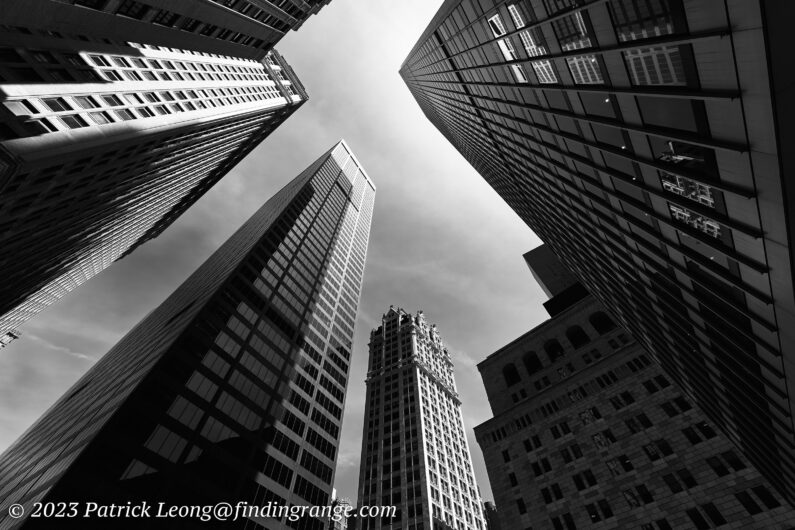
↑ Here’s a shot taken with f8 and 100 ISO.
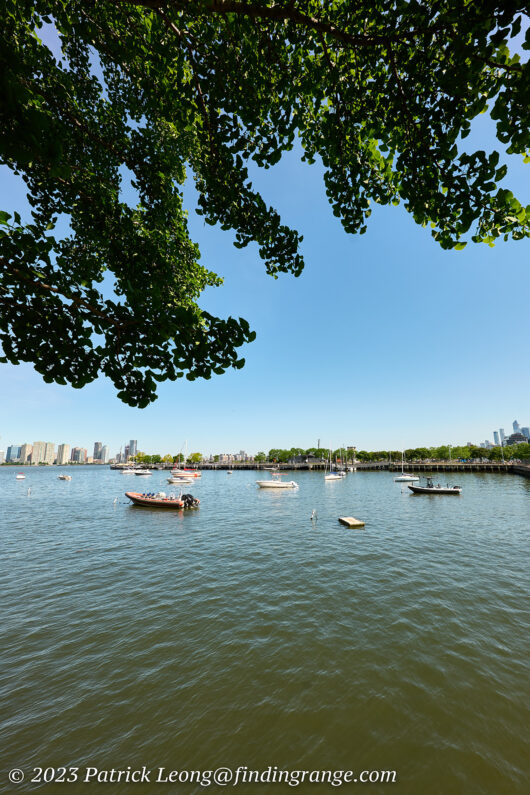
↑ I used f11 and 250 ISO here.
As for the price, it’s currently listed at $1,599, which to me, is like the icing on the cake. There’s no doubt that it is still pretty expensive but reasonable given what you’re getting here. This, to me, is currently one of the best Sigma lenses you can buy, and this is coming from a person who doesn’t even use wide angles much anymore.
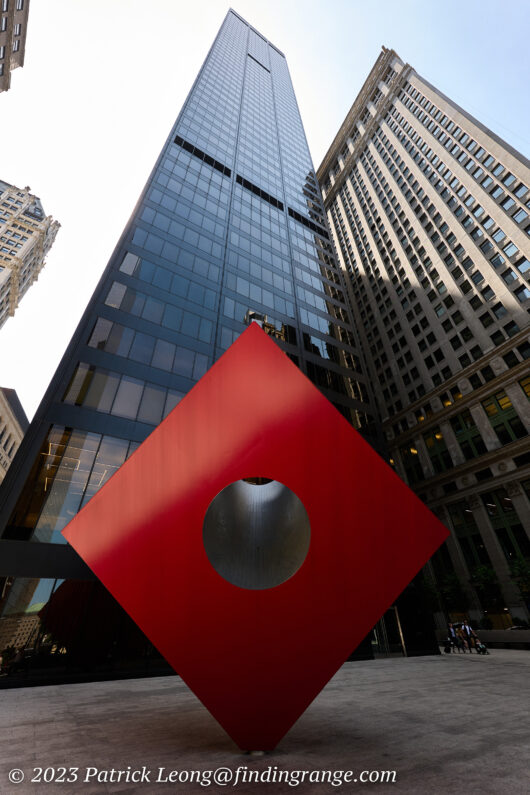
↑ I used f8 and 400 ISO here.
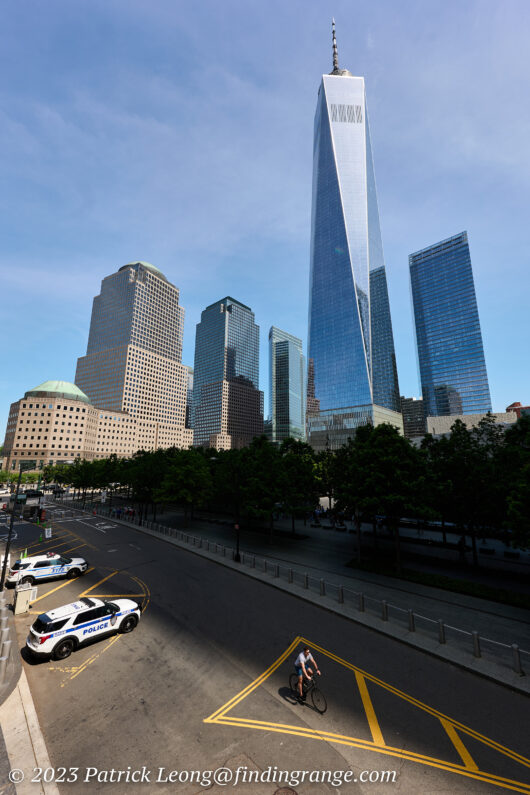
↑ This shot was taken using f8 and 160 ISO.
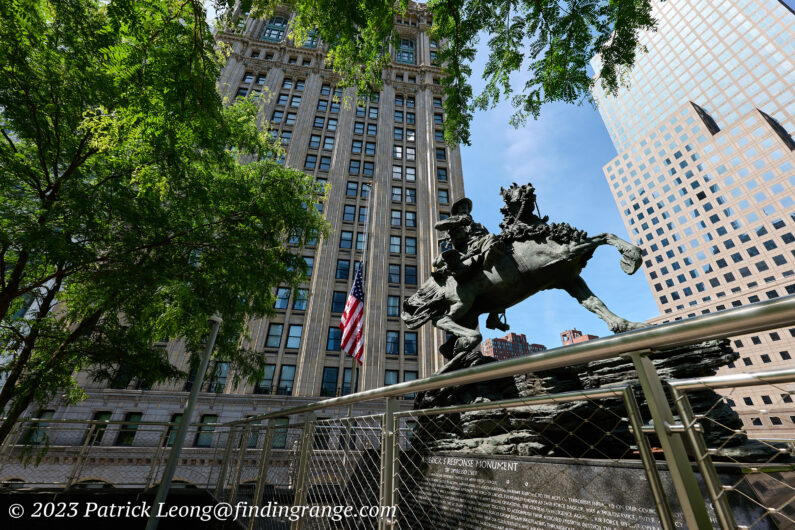
↑ Here’s one taken with 125 ISO and f8.
Lastly, besides all the technical stuff and the price, this lens is just downright fun to use. As some of you know, I primarily shoot boudoir and street fashion now, and I just don’t use ultra wide angles as much as I used to before. I forgot how fun it can be to use one, especially one of this quality.
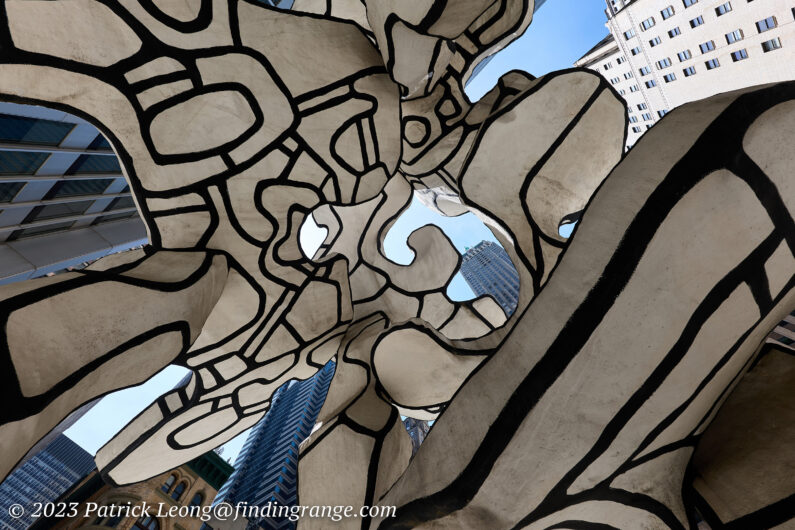
↑ The settings for this photo were f8 and 160 ISO.
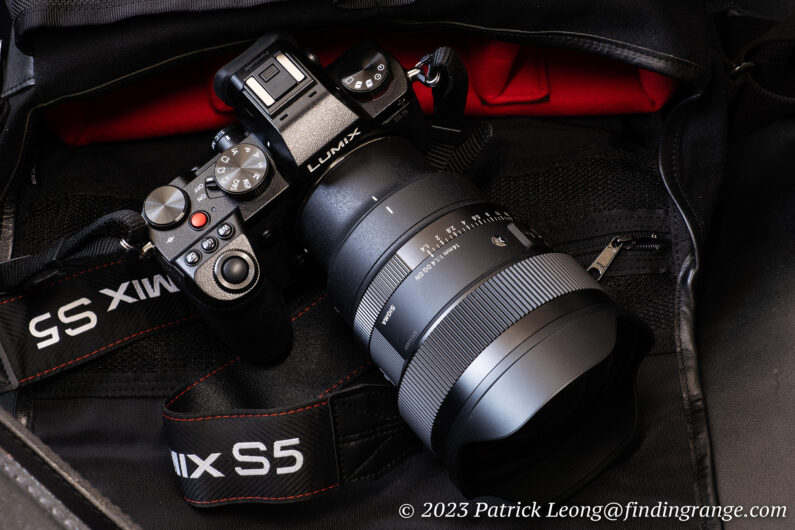
↑ Here’s one last photo of the Sigma 14mm f1.4 DG DN Art lens attached to the Panasonic Lumix S5.
Sigma has been releasing some exceptional lenses for L mount, and this is definitely another one. You have probably already guessed it but I highly recommend the 14mm f1.4 Art to anyone who is in the market for ultra wide angle with a large maximum aperture.
Thanks for taking the time to read my review! If it helped, please consider purchasing from any of the links mentioned in this post, which in turn, helps support this site. I get a small commission but it will not cost you anything extra. Thank you!

